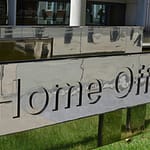This content is part of the Vision for the Public Sector Zone
A consultation on the privatisation of HM Land Registry, conducted in the spring of 2016 was the second in two years and was a challenging time for our staff. Following years of continual changes to our Board, plus a lack of strategic direction leading to poorly managed change our staff felt like their voices were not heard and their opinions did not matter.
The consultation’s conclusion (that HM Land Registry would stay in the public sector) marked a watershed for the organisation and opened the opportunity for new, open and honest engagement from the Chief Executive and Board. Through a digital communications approach which enabled 2-way dialogue, senior colleagues were expected not only to engage in conversations with frontline staff in real time but also for action to be taken on their feedback – an accountability loop that was transparent and immediate and that had never been experienced by our staff. This was reinforced with regular visits and town hall style meetings, staff forums and networks. This approach saw significant increases in annual engagement scores and rises that were amongst the highest in the Civil Service, particularly around leadership and managing change.
What is HM Land Registry?
We are the Government department which is responsible for registering the ownership of land and property in England and Wales. Every day, our staff undertake 120,000 transactions recording ownership changes, mortgages or leases that affect it.
Our People
We are 5000 civil servants, located across 14 offices in England and Wales, with an average length of service of over 20 years and a 75% trade union membership.
Turbulence and uncertainty
Following two privatisation attempts in 2014 and 2016, five chief executives in the span of as many years and poorly managed transformation projects the morale of our staff was poor and trust in senior management was negligible. Structural issues included a lack of career progression for operational staff and little recruitment into the organisation with only one percent of employees under 30 in 2014.
Chronically low engagement scores reflected these issues and our scores against leadership and managing change were the lowest across the Civil Service. Our staff felt their views were being suppressed.
Using communication to rebuild relationships
With the appointment of our current Chief Executive in 2015 we decided to radically change our approach to communications between senior management and our staff. We moved to a transparent and public two-way dialogue platform through our intranet and used face-to-face engagement to follow up on challenging issues. We wanted to create a greater understanding of Board decisions, recognise the achievements of staff, and to make the relationship between seniors and staff more personal and more accountable.
http://productivityandengagement.com/wp-content/uploads/2018/01/HM-land-registry-case-study.pdf




